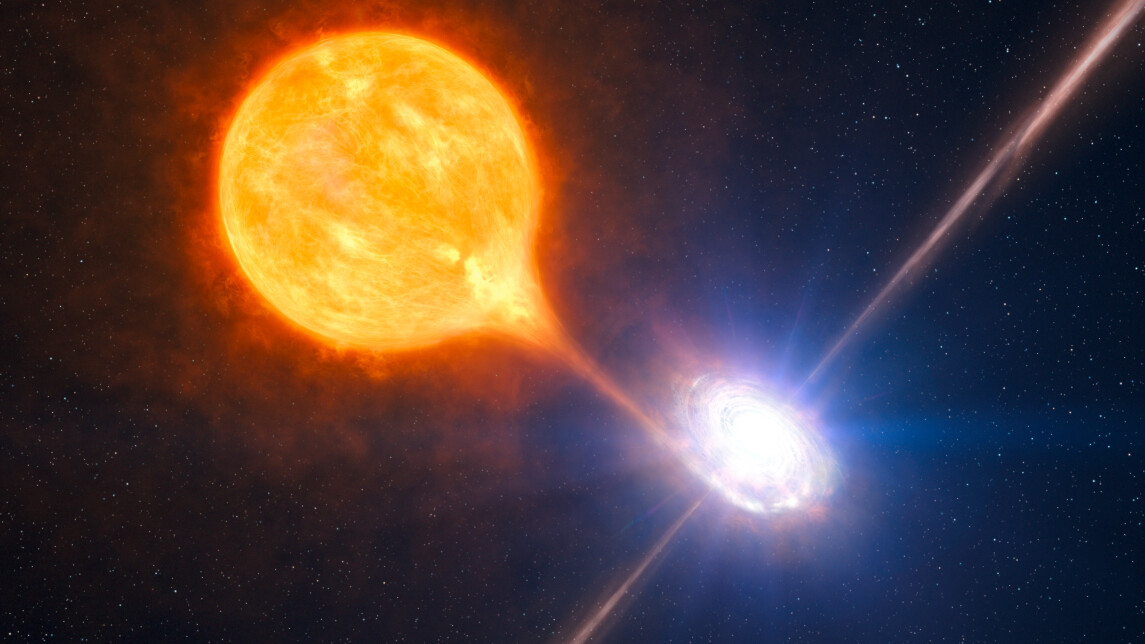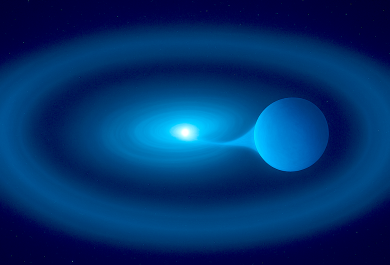Stellar-mass black holes that are part of binary systems sometimes show variable polarization of optical emission. The degree, angle and variability pattern of polarization is characteristic of the physical processes occurring in the vicinity of a black hole. By studying black holes astronomers learn how matter and energy behave under extreme conditions.
Black holes of stellar masses are born when a large and bright star depletes its internal energy source, which results in a bright explosion known as a ‘supernova’. The remaining stellar core, if dense enough, collapses and forms a black hole. Black holes that are part of binary systems interact with their companion stars and capture matter that is expelled from these stars. Black holes slowly consume captured matter - the process is called ‘accretion’- forming a flat circular disc-like structures around themselves. Accretion sometimes produces collimated streams of matter (jets) which are ejected along the black hole spin axis. Spin, mass and charge uniquely characterize physical properties of a black hole.
There are several competing models that can explain the changes in the brightness of such sources, but these models are not easily distinguished. Polarization variability can be used as an additional tool to constraint and potentially rule out unsuitable models, bringing the scientific community closer to understanding black holes and their lifecycle. Black holes are important for physics in general because the processes in the close vicinity of a black hole are governed by the general relativity theory.
The light emitted by a binary system with a black hole is produced by several components: companion star, disc, jet, and hot medium in the close vicinity of a black hole. Each component has its own pattern of brightness and polarization variability, or no polarization at all. As the relative contribution of each component changes with time, it is quite hard to reliably identify which component is responsible for emission at a given time. If polarization variability is observed, its correlation with the changes in
brightness helps to better understand the physical processes responsible for the emission and rule out implausible scenarios.
– A sample of black hole binaries was observed with the help of two polarimeters, DiPol-2 and DiPol-UF, both build at the University of Turku in collaboration with the Leibniz Institute for Solar Physics, Germany. After accounting for the polarization of the interstellar medium, which is caused by the dust particles that fill the vast space between the Earth and the source, two systems were found to exhibit small but statistically significant variable polarization, Kosenkov says.
The data provided insights into the evolution of these systems and revealed a potential misalignment of the black hole spin and binary orbital axis in one of the systems – a result that will have profound implications for studies of stellar-mass black holes.
Image Credits: ESO/L. Calçada/M.Kornmesser
***
MSc Ilia Kosenkov defends his dissertation in Astronomy entitled ”High-Precision Polarimetric, Broad-Band Spectroscopic and Temporal Studies of Black Hole X-ray Binaries at the University of Turku.
The dissertation defence is held online: https://utu.zoom.us/j/68922340529
The Opponent is Academician Eugene Churazov (Space Research Insitute (IKI), Russia and Max Planck Institute for Astronomy, Germany) and the Custos is Professor Juri Poutanen (University of Turku). The event is held in English.




